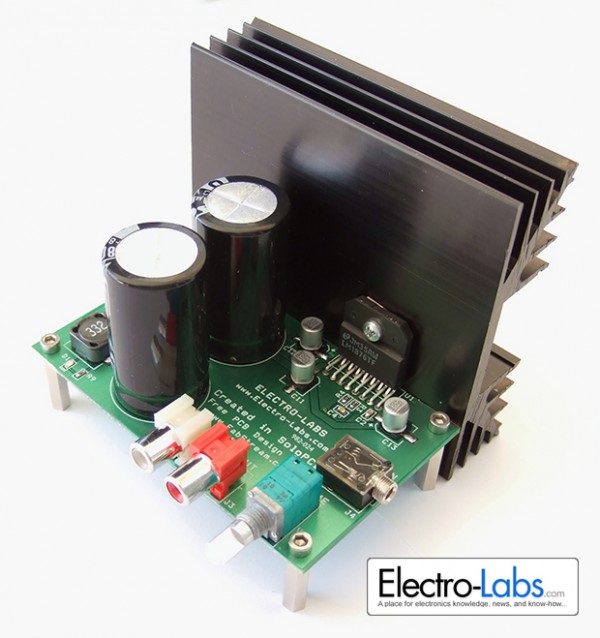We are building another enjoyable weekend DIY project. This is an audio power amplifier based on LM1876 which can deliver up to 20W per channel into 4 or 8 ohm load and guarantees less than 0.1% THD + N (Total Harmonic Distortion + Noise).
The amplifier is powered by -15 0 15 VAC symmetrical supply. The full bridge diode rectifier and the smoothing capacitors convert the AC input to ±21 VDC which is used to power LM1876. The inductors on the AC input line reduces the noise arising from the mains line.
The audio input is connected to the board via 3.5mm stereo socket. The stereo potentiometer adjusts the amplitude of the audio signal. The potentiometer also includes a switch which pulls the Standby pins to logic high and makes the amplifiers go into the standby mode. In standby mode, LM1876 draws about 4.2mA and the power dissipation reduces significantly. The audio output of the amplifiers are connected to RCA connectors on the board.
LM1876 generates quite amount of heat so a heatsink is required to cool down the IC. A big heatsink is used for this purpose.
Circuit Design
The schematic of the project is drawn in SoloCapture, the schematic editor of SoloPCB tools. SoloCapture makes the schematic drawing process very easy and fast. You can download SoloPCB tools at Fabstream.com for FREE.
You can download the SoloPCB design files of the project by using the link below.

